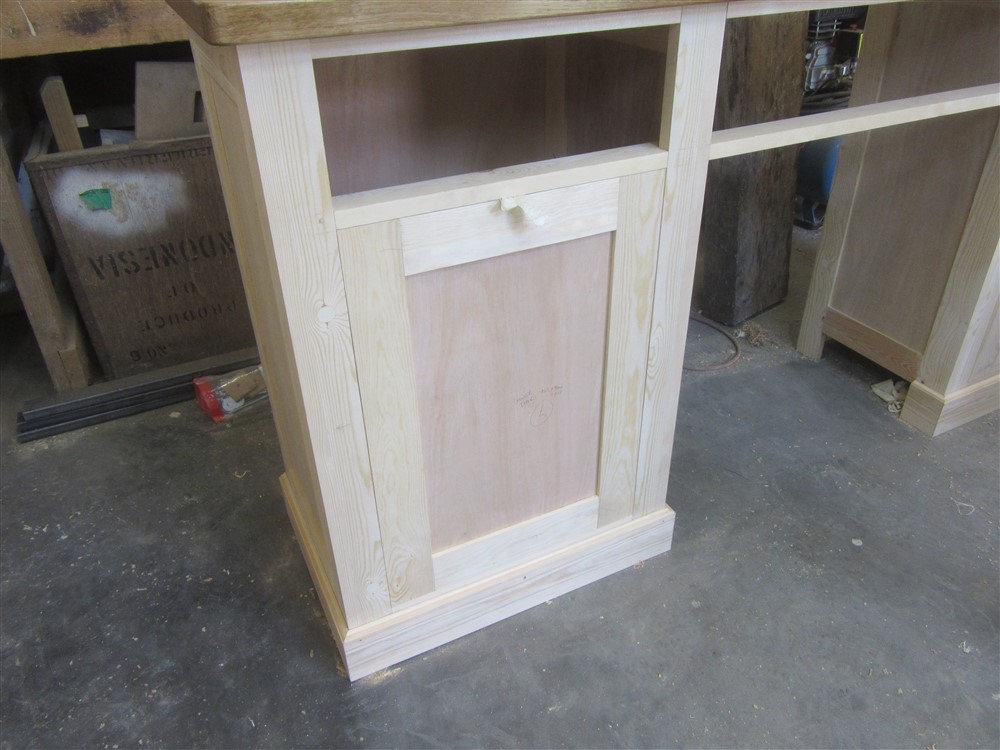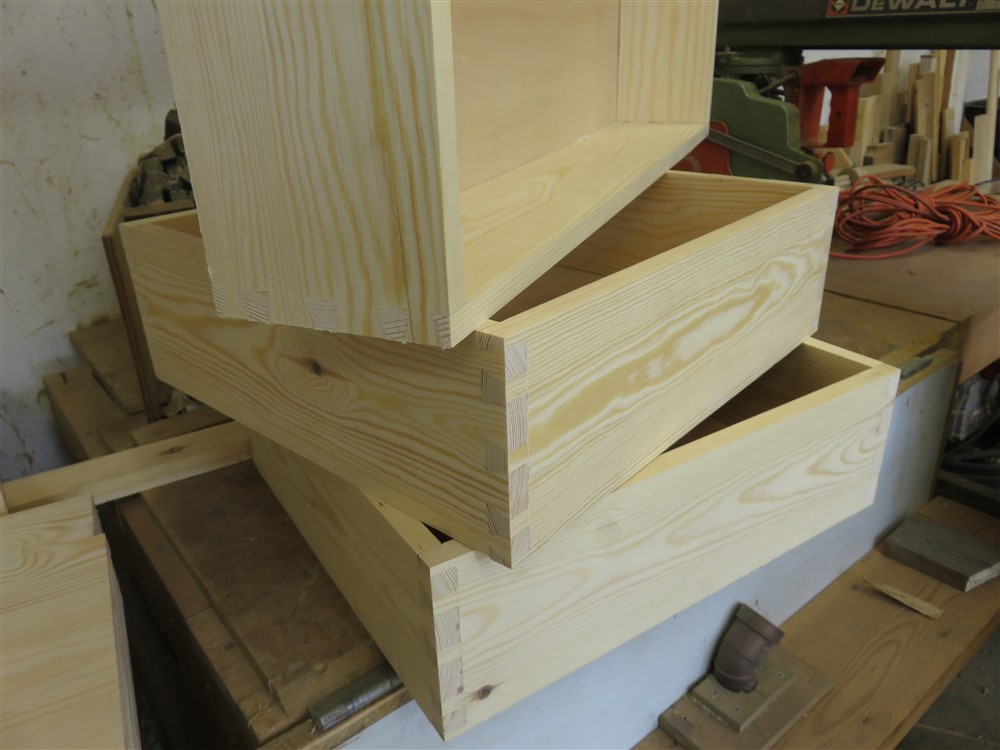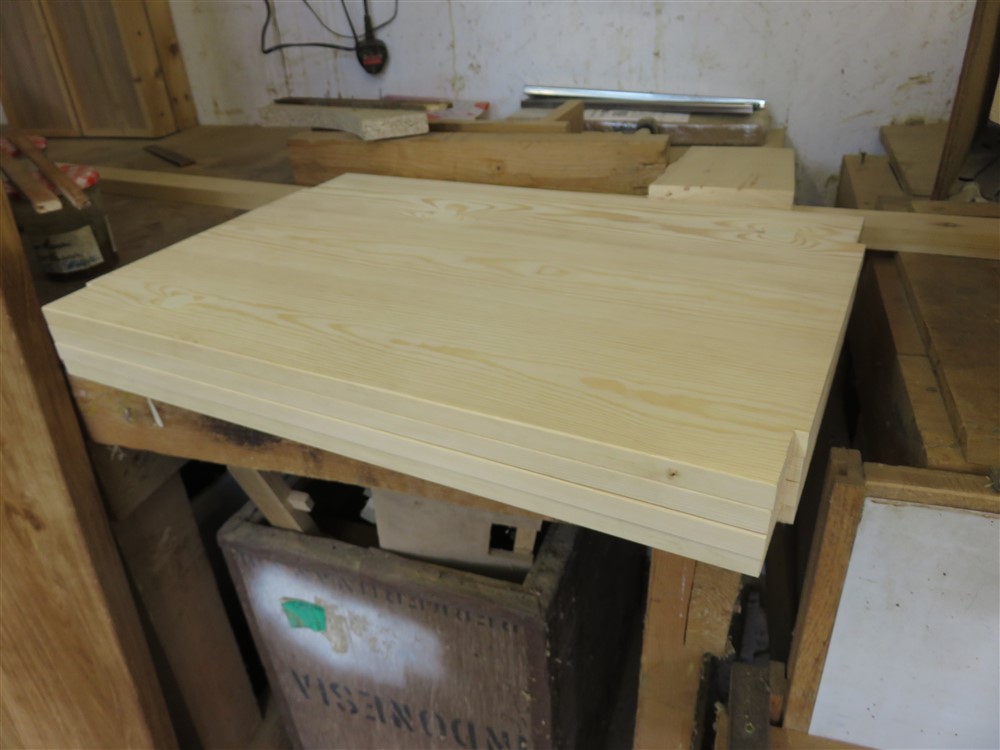You are using an out of date browser. It may not display this or other websites correctly.
You should upgrade or use an alternative browser.
You should upgrade or use an alternative browser.
Chipped edges on new planes and do new planes need sharpening before use?
- Thread starter silz
- Start date

Help Support UKworkshop.co.uk:
This site may earn a commission from merchant affiliate
links, including eBay, Amazon, and others.
topchippyles
Established Member
Must be real poor quality if they are chipping.Daft question but is there some hidden metal in the timber you planed ?
It's a fairly common problem which has cropped up several times with new edge tools of various makes. The general consensus is that it's just the first few millimetres of steel which ends up being more brittle than the rest. Grind and hone your way past this and all should be well.
Nigel Burden
Established Member
I can't comment on Wood River planes.
It depends what you mean by a smooth surface, but I would not expect a no7 to leave a polished smooth surface due to what the plane is used for. Having said that, I can, by setting the cap iron very close to the cutting edge, 1/32" or closer, get my wooden jointer to leave a smooth surface.
My Record 5 1/2 will leave a polished surface if set up in the same manner and I often use it as a smoother, like my no 4.
Does the wood that you're planing have any knots? Although pine is a softwood, the knots are extremely hard and will knock the blade about.
Nigel.
It depends what you mean by a smooth surface, but I would not expect a no7 to leave a polished smooth surface due to what the plane is used for. Having said that, I can, by setting the cap iron very close to the cutting edge, 1/32" or closer, get my wooden jointer to leave a smooth surface.
My Record 5 1/2 will leave a polished surface if set up in the same manner and I often use it as a smoother, like my no 4.
Does the wood that you're planing have any knots? Although pine is a softwood, the knots are extremely hard and will knock the blade about.
Nigel.
Woody2Shoes
Impressive Member
Where did you get the piece of wood from? Pallet wood? Any tiny bits of grit or metal dust (eg from angle grinding or filing) lurking in there? Recently I made a nasty mess of a nice bronze 102 on the end of the hickory shaft of a blacksmiths hammer (it had almost invisible bits of metal dust in it).
What angle is the bevel?
Cheers, W2S
PS I have two WR and several QS (from the same factory) planes and all are as excellent as you might hope them to be
PPS that wood looks like a very grotty bit of spruce palletwood - I'd suspect contamination with grit/etc
What angle is the bevel?
Cheers, W2S
PS I have two WR and several QS (from the same factory) planes and all are as excellent as you might hope them to be
PPS that wood looks like a very grotty bit of spruce palletwood - I'd suspect contamination with grit/etc
Nigel Burden
Established Member
Your photo shows tear out around the knot where the grain direction reverses. You may need to plane in the opposite direction, but setting the cap iron close to the cutting edge as I explained in my previous post, a tightly set cap iron and a shallow cut will help. See the link below about setting the cap iron and tear out.
https://www.theenglishwoodworker.com/?s=setting+the+cap+iron
Nigel.
https://www.theenglishwoodworker.com/?s=setting+the+cap+iron
Nigel.

£10.19 (£0.39 / count)
£11.99 (£0.46 / count)
Nicpro Carpenter Pencil with Sharpener, Mechanical Carpenter Pencils Set with 26 Refills, Case, Deep Hole Marker Construction Pencils Heavy Duty Woodworking Pencils for Architect (Black, Red)
NicproShop EU

£24.99
Facemoon Reusable Masks,Safety Masks,Dual Filter Masks, Paint, Dust, Epoxy Resin, Construction, Welding, Sanding, Woodworking, Chemical Reusable Gas Masks
ShenZHEN CIRY MINGYANG LITIAN ELECTRONIC ECOMMERCE

£16.99
£19.99
Respirator Mask,Safety Dust Face Cover,Dust Face Cover Paint Face Cover,Gas Mask With Filter,For Paint,Dust And Formaldehyde,Sanding,Polishing,Spraying And Other Work
ShenZHEN CIRY MINGYANG LITIAN ELECTRONIC ECOMMERCE

£9.99 (£1.00 / count)
£14.45 (£1.44 / count)
JSP M632 FFP3moulded Disposable Dustmask (Box of 10) One Size suitable for Construction, DIY, Industrial, Sanding, dust protection 99 Percent particle filtration Conforms and Complies to EN 149
Amazon.co.uk

£15.99 (£1.60 / count)
£27.44 (£2.74 / count)
3M 8822 Disposable-fine dust mask FFP2 (10-pack)
Amazon.co.uk

£199.00
£360.17
Trend Portable Benchtop Router Table with Robust Construction for Workshop & Site Use, 240V, CRT/MK3
Amazon.co.uk
Nigel Burden
Established Member
The blade chipping is not good, but just a thought. Is the blade sharpened to an angle that is too shallow? An angle up to 30° is ok and would give a stronger edge.
Nigel.
Nigel.
Am i correct to assume honing my way past these mm will take hours? thats how it looks like.
Honing is relatively slow and removes the minimum of metal, that's why I said grind and hone. Use a bench grinder to take off a few mm, and give you a bevel of about 25 degrees. Then hone a secondary bevel at the tip, at about 30 degrees. It should only take a few minutes.
If you don't have a grinder you could use abrasive paper for this step, but it would take a bit longer. Use something quite coarse - 80 grit would be ok.
AJB Temple
Finely figured
Andy is spot on. You have a bit of a perfect storm here: edge needs grinding and honing, you are probably using sub-optimal technique (hence the tear out), and it is an actual bona fide miracle if anyone gets a great finish on B&Q pine.
Working on rickety plastic trestles will not help your cause. Make a bench that is heavy (cheap wood is fine), hold your test piece securely, and ideally use a cheapish bit or hardwood to test your planes: cherry, tulipwood etc.
Working on rickety plastic trestles will not help your cause. Make a bench that is heavy (cheap wood is fine), hold your test piece securely, and ideally use a cheapish bit or hardwood to test your planes: cherry, tulipwood etc.
MikeG.
Established Member
If you don't have a grinder, but do have a belt sander, remove the collection bag, mount the sander on it's side and with some 80 grit (or thereabouts) paper you can grind a new primary bevel quite easily. Have a jar of water to hand, and if and when the blade gets too hot to hold, sit it in the water for 30 seconds or so.
Oh, and do yourself a favour. Never ever buy wood from B&Q again. There are lots of Ridgeons near you, and you'll be able to select from a huge stock of much, much better pine.
Oh, and do yourself a favour. Never ever buy wood from B&Q again. There are lots of Ridgeons near you, and you'll be able to select from a huge stock of much, much better pine.
transatlantic
Boom!
As a quick test, try planing the edge of the board rather than the face. Avoid any knots for now, as they can be really really hard in pine. It should be quite easy to get a good finish. If you're still having issues, then there is definately an issue with the blade.
Problem with grinding it back is that if you still end up returning it, they'll probably make out that you damaged the blade by overheating it. Although that would make it soft, not brittle, so would show bending rather than chips/cracks?
But I agree, you shouldn't have to grind a blade back on a mid range plane. Rob Cosmon even has videos showing how little prep the blade of a WoodRiver needs.
Problem with grinding it back is that if you still end up returning it, they'll probably make out that you damaged the blade by overheating it. Although that would make it soft, not brittle, so would show bending rather than chips/cracks?
But I agree, you shouldn't have to grind a blade back on a mid range plane. Rob Cosmon even has videos showing how little prep the blade of a WoodRiver needs.
MikeG.
Established Member
......... I do expect that plowing straight into the knots with full power to straight up ruin the blades.......
Not so. Any decent plane iron will survive an impact with knots at full power, possibly unscathed. Do it too often and you might need to re-hone, but it really shouldn't do any damage.
MikeG.
Established Member
The blade chipping is not good, but just a thought. Is the blade sharpened to an angle that is too shallow? An angle up to 30° is ok and would give a stronger edge.
Yep. Mine don't have a secondary bevel, and are all sharpened to 30 degrees.
They are big chips in my book. If the blade was provided with a low angle bevel and you’ve followed it with the hone then the edge could be weak. Rejoining to 30 degrees would strengthen it. However if you did this and it still chipped I’d be sending it back.
F.
F.
- Joined
- 6 Jun 2011
- Messages
- 2,980
- Reaction score
- 885
Hi sebg
We did see your email sent at 4.42 this afternoon - you may have noticed our opening hours are 9.00-4.30 - so I would appreciate a little time to try and help if possible; I have emailed WoodRiver in the USA to ask if they have had any similar issues and await their reply. I have never suffered any blade chipping issues with my WoodRivers, nor have my students who all have WoodRivers in their tool kits.
You mentioned in your post that the WoodRivers were closely priced to the Lie Nielsen’s, of course I am happy to offer you a no quibble refund in full, but I’m pretty sure the LN's are more than twice the price of WoodRiver planes.
I am confident in the quality of the planes but there may be an issue with your blades. Can you advise what timber you are using? It looks to me like carcassing pine, usually used for stud partition walls, not something I would personally use any quality plane over, be that a WoodRiver or a Lie Nielson.
Your bevel up planes would cope better with the knots as they are set at a much lower bedding angle, this attacks the timber in a different manner to standard bench planes with a bedding angle of 45 degrees. Are you able to regrind, sharpen and try some other timber. I am not convinced that throwing more tool money at knotty pine is the answer? It would be really helpful to see a couple more photos of how you have set up the blade and chipbreaker, if you are able to upload them please?
I am always happy to assist customers wherever I can and replace or give full refunds if there are any issues with our tools, we pride ourselves on our customer service, so please give us a chance to sort out your issue.
Cheers Peter
We did see your email sent at 4.42 this afternoon - you may have noticed our opening hours are 9.00-4.30 - so I would appreciate a little time to try and help if possible; I have emailed WoodRiver in the USA to ask if they have had any similar issues and await their reply. I have never suffered any blade chipping issues with my WoodRivers, nor have my students who all have WoodRivers in their tool kits.
You mentioned in your post that the WoodRivers were closely priced to the Lie Nielsen’s, of course I am happy to offer you a no quibble refund in full, but I’m pretty sure the LN's are more than twice the price of WoodRiver planes.
I am confident in the quality of the planes but there may be an issue with your blades. Can you advise what timber you are using? It looks to me like carcassing pine, usually used for stud partition walls, not something I would personally use any quality plane over, be that a WoodRiver or a Lie Nielson.
Your bevel up planes would cope better with the knots as they are set at a much lower bedding angle, this attacks the timber in a different manner to standard bench planes with a bedding angle of 45 degrees. Are you able to regrind, sharpen and try some other timber. I am not convinced that throwing more tool money at knotty pine is the answer? It would be really helpful to see a couple more photos of how you have set up the blade and chipbreaker, if you are able to upload them please?
I am always happy to assist customers wherever I can and replace or give full refunds if there are any issues with our tools, we pride ourselves on our customer service, so please give us a chance to sort out your issue.
Cheers Peter
MikeG.
Established Member
Any pine would be quite full of knots
You do state things as fact rather readily:




Last edited:
Phil Pascoe
Established Member
Most of the "pine" I've seen at B&Q is spruce.
I think you have been given good advice by some stand out experts. World class in some instances. However. If you want to cover postage I'm more than happy to regrind your iron(s) on my sorby and give you a known grind angle. That will take the hard work out and also because I reckon Andy T has it right about the new edge on the steel and it interests me. That, plane set up and cap iron use and timber properties if addressed should sort any issues but I'm more than happy to help.
Modern steels are so predictableand available that it makes little sense for a higher end maker to use cheese metal. It just makes no sense.
Hope this might help.
Regards
Modern steels are so predictableand available that it makes little sense for a higher end maker to use cheese metal. It just makes no sense.
Hope this might help.
Regards
AJB Temple
Finely figured
Sebastian, people here are trying really hard to help you. Peter Sefton is known to many here and is an honourable man. The two irons you are struggling with are different sizes and it is unlikely that they would both be faulty. It takes a while to learn the art of woodworking to a high standard, and you are just starting out really.
It is practically impossible to plane anything properly without a solid bench and a good holdfast system or end peg.
BM 101 has made a kind offer and I will too. If you want to visit my workshop in Kent, I will sharpen and hone your plane blades for you and show you how to do it such that you can get transparent shavings curling off them, on hardwood or even your B&Q stuff (if we really must!). I will show you how to use various types of hand plane and how to set the blade in properly. You can try out some old Record planes and some newer Lie Nielson and Clifton planes and I will show you that you can get perfectly good results on yours. I would bet money on them working fine for me. You can have a go at sharpening on waterstones, and oil stone and a Robert Sorby (and strop) and compare with (daftly named) scary sharp if you want. You can plane some oak or wenge or maple all of which are leagues harder than the B&Q spruce or pine or whatever it is you are using. Buy better wood.
Over a few years of woodworking, I know for sure that when stuff goes wrong, the first place to look is at me. And the second place is also me. The tool, if set up sensibly is rarely at fault.
Genuine offer. Adrian
It is practically impossible to plane anything properly without a solid bench and a good holdfast system or end peg.
BM 101 has made a kind offer and I will too. If you want to visit my workshop in Kent, I will sharpen and hone your plane blades for you and show you how to do it such that you can get transparent shavings curling off them, on hardwood or even your B&Q stuff (if we really must!). I will show you how to use various types of hand plane and how to set the blade in properly. You can try out some old Record planes and some newer Lie Nielson and Clifton planes and I will show you that you can get perfectly good results on yours. I would bet money on them working fine for me. You can have a go at sharpening on waterstones, and oil stone and a Robert Sorby (and strop) and compare with (daftly named) scary sharp if you want. You can plane some oak or wenge or maple all of which are leagues harder than the B&Q spruce or pine or whatever it is you are using. Buy better wood.
Over a few years of woodworking, I know for sure that when stuff goes wrong, the first place to look is at me. And the second place is also me. The tool, if set up sensibly is rarely at fault.
Genuine offer. Adrian
Last edited:
Similar threads
- Replies
- 5
- Views
- 282


























